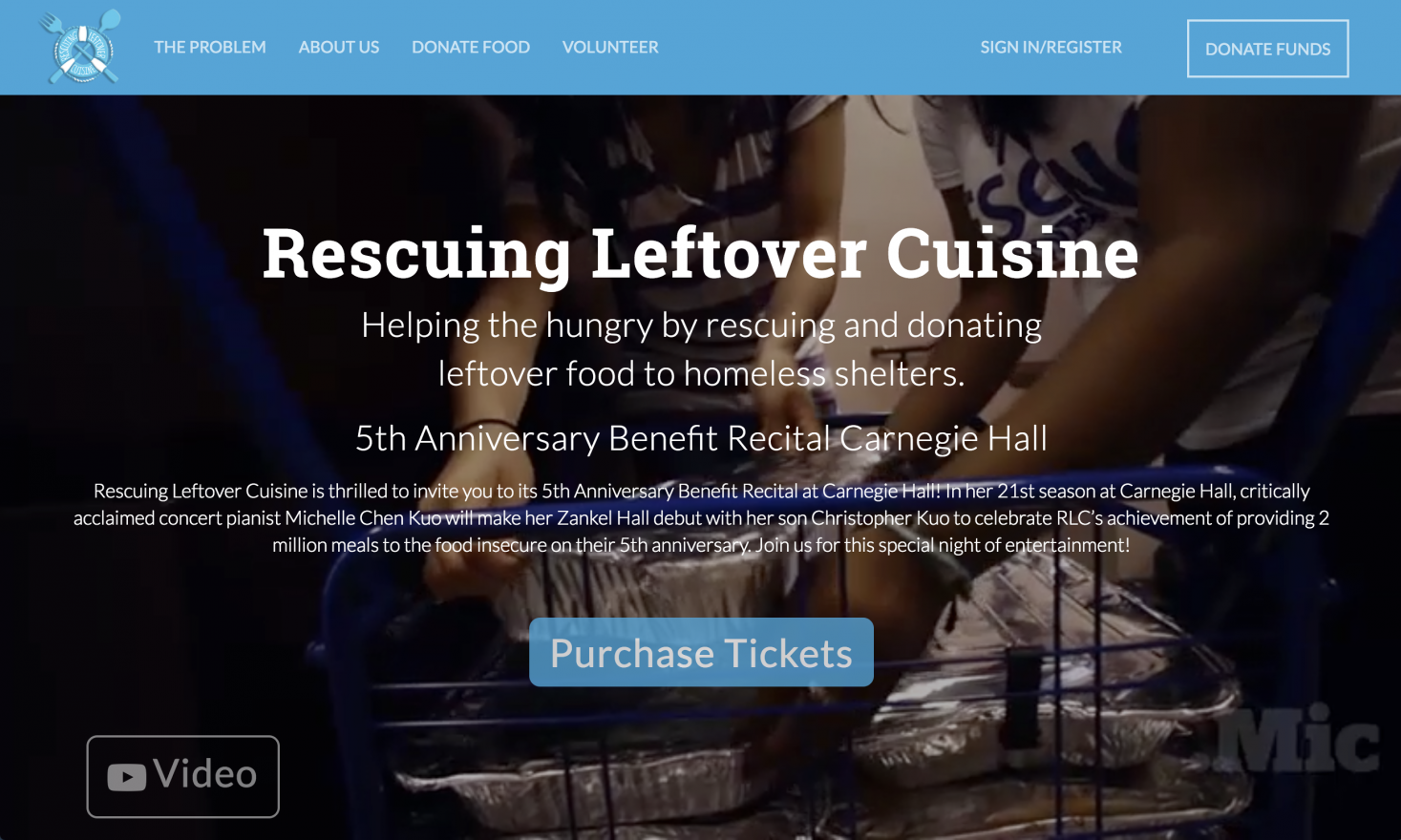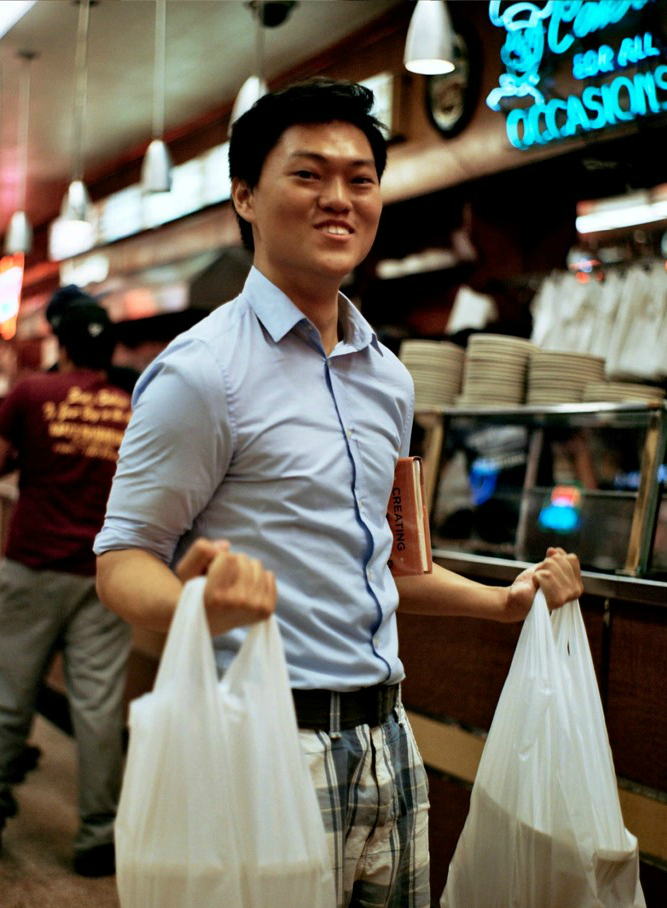
(Rescuing Leftover Cuisine)

(Rescuing Leftover Cuisine)
Many describe a trip to New York as “taking a bite out of the Big Apple.” For Robert Lee, co-founder of Rescuing Leftover Cuisine and 2016 recipient of Forbes 30 under 30 for social entrepreneurship, his time in New York led him down a different path: What happens to the rest of the apple?
According to the 2017 annual United Nations report on world food security and nutrition, the number of people affected by hunger has increased by 38 million since 2016. As 11% of the global population suffers from hunger, violent conflicts and climate-related shocks are predicted to only exacerbate the trend.

Lee was no stranger to the concept of hunger when he launched Rescuing Leftover Cuisine. As a child of Korean immigrants, he grew up witnessing the power of hard work and the beauty of the American dream. He also experienced what it was like to be hungry, despite living in the land of “the supersized meal.” He would think: “How can 1 in 7 people in America be hungry while 40% of all food in the United States gets tossed annually?” (A stat from the National Resources Defense Council.)
Where others saw a frustrating paradox between food waste and global hunger, Lee identified an opportunity. Using his financial background he calculated that this wastage could serve 58,064,516,129 meals (based on the national average of $2.79/meal). With the inspiration of a college organization, Lee partnered with classmate, Louisa Chen, to tackle hunger by launching Rescuing Leftover Cuisine. The mission was simple: Help the hungry by saving quality food that would otherwise go to waste.
A nonprofit 501(c)3 organization, Rescuing Leftover Cuisine partners with restaurants to rescue quality leftover food and ensure it reaches those who need it. Since the organization’s New York launch in 2013, the model has thrived. In 5 years, they have rescued 2.1 million pounds of food, created 1.6 million meals for the hungry, prevented more than 330 tons of carbon dioxide equivalents from being emitted into the environment, and expanded to 16 cities — and even more are interested. Rescuing Leftover Cuisine selected their new cities from 300 eager branch applicants.
When asked “what makes this company so successful?” Lee immediately points to the mission: eliminating food waste by feeding hungry families. Every aspect of the organization is intentional and purpose driven. His goal for food efficiency is reflected in the organization’s operational efficiencies. For instance, transportation between the partner restaurants and homeless shelters is crowd sourced and volunteer run. A key factor in the organization’s success is this localized engagement. Again, technology enables Rescuing Leftover Cuisine to communicate seamlessly between partner restaurants and volunteers. A web application allows restaurants to report excess food and volunteers to be notified accordingly. Rescuing Leftover Cuisine further promotes efficiency by offering reports and analyses to partner restaurants of their excess food purchases and suggestions on how to avoid food waste. “Even if this means less donated food in the short-term,” explained Lee, “it will contribute to more positive long-term impacts.”
Rescuing Leftover Cuisine is led by determined and passionate people with a background in this work. Lee himself spent four years at New York University learning about saving quality food with a campus club that took cafeteria leftovers to local homeless shelters. He combines that experience with his academic and professional background in finance to guide the non-profit to success. After spending just a few minutes speaking with Lee, you will note his commitment to due diligence and his contagious enthusiasm for this work.
While he fights hunger directly by connecting the hungry with quality food, Lee is also thinking about the future. “Climate change is a key issue in our organization,” he says. “When the 40% of food wasted annually in the U.S. reaches a landfill, it generates methane.” Methane is a greenhouse gas that is 23 times as potent as carbon dioxide in trapping heat within the atmosphere. “We eat three meals a day,” Lee explained, “if we can get people thinking about their impact on this level, we can make a clear difference.”
Lee’s diligent work ethic and forward thinking helped land him a spot on Forbes 30 under 30 list for social entrepreneurship. It is evident that saving the rest of the metaphorical Big Apple is only the beginning for Rescuing Leftover Cuisine. With a model that has proven successful and scalable, the organization plans to focus on increasing impact across its 16 cities in the near-term. Rescuing Leftover Cuisine’s focus on community-driven change is helping tackle global hunger one city (and leftover) at a time.